Social Media Harm Lawsuit: A Deep Dive into Class Action Lawsuits
- Last Updated: June 12th, 2025

Attorney Jessie Paluch, founder of TruLaw, has over 25 years of experience as a personal injury and mass tort attorney, and previously worked as an international tax attorney at Deloitte. Jessie collaborates with attorneys nationwide — enabling her to share reliable, up-to-date legal information with our readers.
Legally Reviewed
This article has been written and reviewed for legal accuracy and clarity by the team of writers and legal experts at TruLawsuit Info and is as accurate as possible. This content should not be taken as legal advice from an attorney. If you would like to learn more about our owner and experienced injury lawyer, Jessie Paluch, you can do so here.
Fact-Checked
TruLawsuit Info does everything possible to make sure the information in this article is up to date and accurate. If you need specific legal advice about your case, contact our team by using the chat on the bottom of this page. This article should not be taken as advice from an attorney.
Key Takeaways:
- Explore the intricacies of class action lawsuits within the context of social media harm litigation, gaining a comprehensive understanding of this legal approach.
- Discover the benefits of class action lawsuits, including the amplification of collective voices, shared resource burdens, and the streamlining of legal proceedings in cases of widespread harm.
- Navigate the complexities of social media harm lawsuits, from the initial stages of certification to the potential implications of class action status on both plaintiffs and defendants.
Social Media Harm Lawsuit: A Deep Dive into Class Action Lawsuits
On this page, we’ll discuss the Social Media Harm Lawsuit, an in-depth analysis of class action legal battles, noteworthy Social Media Harm Lawsuit, who qualifies to file a Social Media Harm Lawsuit, and much more.
Intro To Social Media Harm Lawsuit
In the digital age, the prevalence of social media use, especially on platforms like Facebook and Instagram, as revealed by the Facebook papers, has escalated.
This has led to a surge in social media and self-harm cases, often contributing to a mental health crisis due to the mental health effects.
These lawsuits often stem from various types of harm caused by social media platforms, including Meta Platforms and Instagram, and range from product liability to social media addiction.
The negative effects highlighted in the Facebook Papers have put a spotlight on the mental health effects of social media addiction on these platforms.
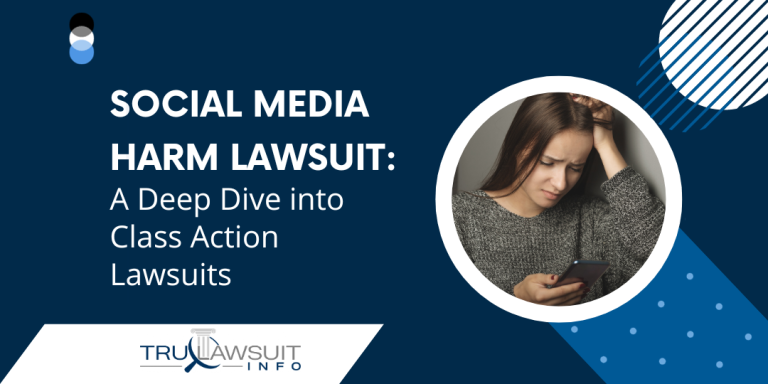
Understanding these social media lawsuits, including social media addiction lawsuits, is crucial as they carry significant legal implications for harmful behavior on social media sites.
These laws are particularly important given the extensive amount social media users use.
The impact on students facing issues with Instagram in school systems is profound, necessitating collective action: class action social media harm lawsuits have become an increasingly common response.
This post delves into the complex intersection where social media use and company law converge, offering insights into the rise and implications of lawsuits on social media sites during a crisis.
Table of Contents
The Power of Unity: Class Action Lawsuits in Social Media Harm Lawsuit Cases
Understanding Class Action Lawsuits
Class action lawsuits are a form of legal proceedings where numerous plaintiffs, such as students or school districts, who have suffered similar harm or losses, unite to sue a common defendant, often a company.
In the realm of social media harm cases, this could mean victims banding together in May against social media giants like Facebook and Instagram, especially if the company targets teens.
Collective Legal Action Benefits
Collective legal action in these cases offers several advantages.
Firstly, it allows individuals with smaller claims to pool their resources and take on big companies, even law firms dealing with company-related social media lawsuits.
Secondly, the law firm can help ensure that every client who has been harmed by companies gets compensated fairly.
Here are some of the benefits of collective legal action:
- Economies of scale: A single lawsuit might not make much of an impact on massive companies like Facebook, known for Instagram, despite the increasing social media addiction reported in school environments.
- Equal compensation: In lawsuits involving companies, health institutions, schools, or districts, those with more resources often get better outcomes.
But in a class action case at a law firm, all plaintiffs, including school districts, are treated equally.
This can significantly increase the pressure on the company.
Social Media Harm Lawsuit: Unity for Justice
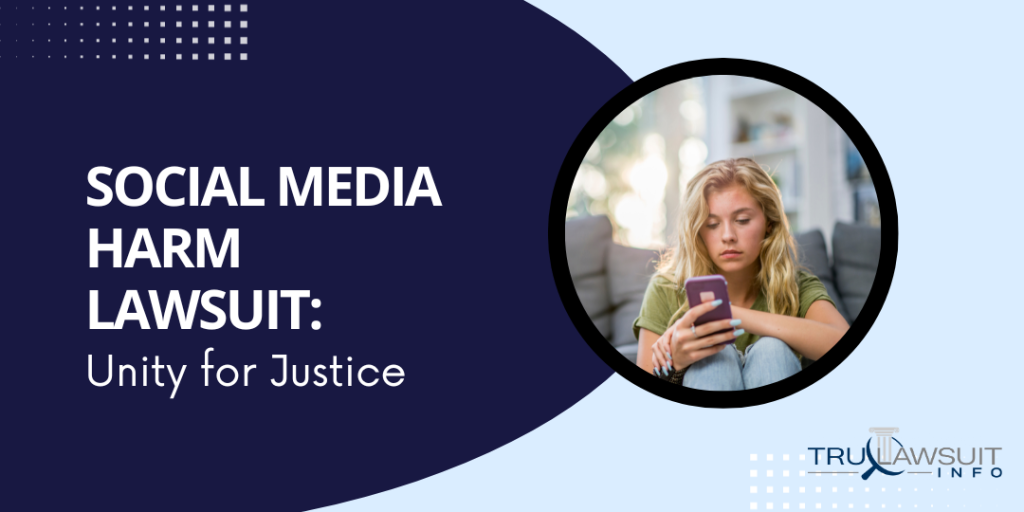
Unity among youth victims in schools increases chances for justice against offending companies in several ways, especially for teens:
- Strengthens their voice: When teens in school stand together, their collective voice becomes louder and harder for companies and the meta to ignore.
- Increases visibility: A large group on Instagram attracts more attention from the media and public opinion, demonstrating the meta effect.
- Meta-enhanced credibility: A high number of similar claims about social media addiction lends credibility to their cause.
Accountability Through Lawsuits
Social media class action lawsuits play an essential role in holding platforms like Instagram, managed by Meta, accountable for their actions or lack thereof, especially in cases of social media addiction rampant among school populations.
Here are some examples:
- Encourages responsibility: Faced with potential multimillion-dollar settlements or verdicts, social networking sites like Instagram, owned by Meta, might be more inclined to address issues proactively, especially in a school environment.
- Deters negligence: The threat of such suits can deter platforms like Instagram, owned by Meta, from neglecting user safety concerns, including social media addiction, especially among school users.
Policy Changes Impact
The impact of these lawsuits, such as those involving Instagram and Meta, extends beyond financial compensation; they also catalyze changes in policies and practices on social platforms.
Here are some of the impacts:
- Policy changes: Successful social media lawsuits, like those involving Instagram, can force social media giants such as Meta to revise their policies, leading to improved user safety.
- Precedent-setting in school: These meta-cases can set legal precedents, shaping how future addiction cases are handled in federal courts.
Strength in Numbers: Advantages of Joining a Class Action Social Media Harm Lawsuit
Shared Funding Increases Litigation Resources
Pooling resources, like the school’s meta approach to social media addiction, is one of the key advantages of collective action.
When you join a class-action lawsuit against social media addiction, you’re not just bringing your meta case to the table.
You’re also contributing to a shared fund at the school that can significantly increase the resources available for litigation against social media addiction.
This collective funding can cover everything from expert witnesses to legal fees, making it possible to take on powerful social media companies with deep pockets, especially in cases related to addiction.
Here are some things you need to remember:
- The cost of litigating alone can be prohibitive.
- Collective funding reduces individual financial burden.
- More resources mean better representation and stronger cases.
Case Credibility Bolstered by Shared Experiences
When multiple people share similar experiences of physical and psychological harm from social media addiction, it adds credibility to the claims made in the lawsuit.
It’s harder for defendants to dismiss or downplay the negative effects of social media addiction when there’s a chorus of voices speaking up about them.
Here are some things to keep in mind:
- Shared experiences provide compelling evidence.
- Multiple testimonies regarding social media addiction make it hard for defendants to refute claims.
- Greater case credibility increases the chances of success.
Heightened Visibility and Awareness Creation
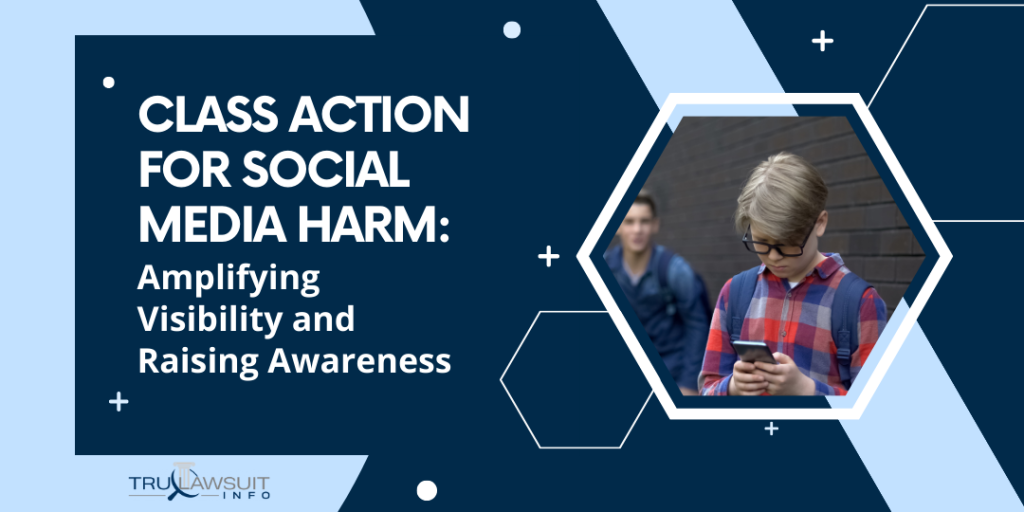
Class action lawsuits against social media, especially those related to social media addiction, often attract more attention than individual ones.
This increased visibility, particularly in the context of a social media addiction lawsuit, helps raise awareness about the issue at hand, shedding light on practices that may have previously flown under the radar.
The spotlight on these issues can lead to public pressure on social media platforms, potentially prompting changes in their policies and practices.
Keep this in mind:
- Class actions draw more media coverage than individual suits.
- Increased visibility leads to greater awareness among users and regulators.
- Public pressure could push platforms toward positive change.
Larger Settlements Possible Through Collective Damages
In class action lawsuits on social media, damages are calculated collectively rather than individually.
This means that if the lawsuit is successful, the total settlement amount could be substantially larger than what an individual might receive.
While this doesn’t necessarily translate into bigger payouts for each plaintiff (as the settlement is usually divided among all participants), it does increase the financial pressure on defendants, making them more likely to change their harmful practices.
It is important to take note of the following details:
- Collective damages can lead to larger settlements.
- Larger settlements put more financial pressure on defendants.
- Financial pressure could incentivize changes in harmful practices.
Class Certification: What It Means for Social Media Harm Lawsuit Plaintiffs
Unraveling the Class Certification Process
Class certification is a legal term that can feel like a jargon stew.
In simple terms, it’s the court’s way of saying, “Yep, this lawsuit can proceed as a class action.”
It’s not about whether the case has merit or not; it’s about whether the plaintiffs have enough in common to band together.
The process begins when one or more individuals file a lawsuit against social media on behalf of themselves and others who’ve suffered similar harm.
The court then examines if these plaintiffs meet specific criteria under Rule 23 of the Federal Rules of Civil Procedure.
If they do, the case gets certified as a class action.
Why Class Certification Matters to Plaintiffs
You may be inquiring about the significance of class certification within the context of your role as a plaintiff in a social media harm lawsuit.
Allow me to elucidate this matter.
Primarily, class certification holds importance due to the principle of collective strength.
As more individuals unite in pursuing legal action against prominent technology entities such as companies accountable as Facebook or Twitter, the collective voice grows in volume, rendering it more impactful and less susceptible to dismissal.
Secondly, it serves to level the legal terrain by facilitating the consolidation of resources.
Litigating against formidable entities like Facebook entails considerable financial and temporal investments.
Collaboration with other plaintiffs permits the distribution of these costs, concurrently enhancing the likelihood of a favorable outcome.
Lastly, class certification promotes uniformity in judgments and mitigates the risk of incongruous rulings for cases predicated on analogous circumstances.
This ensures consistency and eliminates the perplexity arising from disparate compensatory outcomes for essentially identical claims.
Criteria for Class Action Lawsuit Certification
So, what does it take for a social media harm lawsuit to get certified as a class action?
Here are four key criteria:
- Numerosity: There must be so many plaintiffs that joining all their suits into one is impracticable.
- Commonality: There should be questions of law or fact common to the class.
- Typicality: The claims or defenses of the representative parties must be typical of those of the class.
- Adequacy: The representative parties must adequately protect the interests of the class.
Should a lawsuit fulfill these criteria, it progresses toward achieving certification as a class action.
However, it is essential to note that such certification does not guarantee a favorable outcome; it merely represents the initial stage in a protracted legal process.
Class Actions Vs. Individual Lawsuit: Determining the Right Path for You
Pondering Over Factors
Before you decide to take legal action, it’s crucial to weigh up several factors.
It’s not a decision to be taken lightly, and your choice between an individual lawsuit or joining a social media class action lawsuit could significantly impact the outcome of your case.
For instance, consider the potential financial implications.
An individual lawsuit might result in a larger payout if successful, but it also carries higher upfront costs.
In contrast, class actions often involve little to no out-of-pocket expenses for the plaintiffs.
The complexity of the legal process is another key consideration.
Individual lawsuits can be time-consuming and require substantial personal involvement.
On the other hand, once you join a class action MDL (multidistrict litigation), your involvement is typically minimal.
Finally, think about your desired outcome.
If you’re seeking specific remedies that aren’t part of the class action’s objectives, an individual suit might be more suitable.
Comparing Pros and Cons
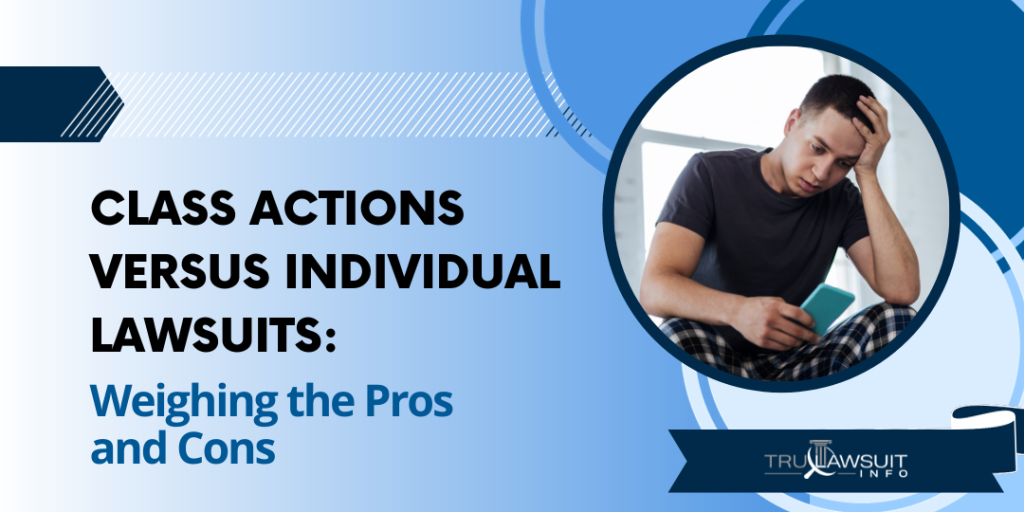
Both types of social media mental health lawsuits come with their own set of advantages and disadvantages.
Class Actions
Pros:
- Economies of scale: Legal costs are shared among all members.
- Greater influence: A large group can exert more pressure on defendants.
- Simplified process: Once you join a class-action MDL, there’s little else required from you.
Cons:
- Smaller payouts: Any settlement or award will be split among all plaintiffs.
- Less control: You have a limited say over how the case proceeds.
Individual Lawsuits
Pros:
- Potential for larger payouts: If successful, you could receive a significant sum.
- More control: You get to make key decisions about your case.
Cons:
- Higher costs: You’ll need to cover all legal fees yourself.
- More complex process: You’ll be more involved in the legal proceedings.
The Way Forward
In the end, choosing the right path for you can depend on a multitude of factors.
It’s essential to conduct thorough internal research and seek professional advice before making a decision.
For instance, if you’re a parent concerned about social media harm affecting your child, joining a class action lawsuit against social media might be an effective way to seek justice.
Many other young people and adults have also found strength in collective action against powerful social media algorithms that they believe have negatively impacted their mental health.
On the other hand, if you’re an employee who has experienced specific workplace grievances not covered by an existing class action, pursuing an individual lawsuit could be your best option.
Remember, most law firms offer free case reviews or consultations to help you determine your best course of action.
Don’t hesitate to take advantage of these resources as you navigate this complex decision-making process.
Class Action Settlements in Social Media Harm Cases: What to Expect
Typical Outcomes from Successful Suits
Class action lawsuits can result in significant settlements.
These are usually monetary compensations awarded to plaintiffs who have experienced harm due to a company’s actions or negligence.
For instance, Facebook settled a lawsuit for $650 million in 2021 over alleged privacy violations related to its facial recognition technology.
In another case, TikTok agreed to pay $92 million to settle allegations that they violated user privacy rights.
These cases highlight two key points:
- Social media companies can be held accountable for their actions.
- Victims of social media harm can receive substantial compensation through class action lawsuits.
However, it’s essential to remember that these outcomes aren’t guaranteed.
The success of a class-action suit depends on several factors, including the strength of the evidence and the legal prowess of the attorneys involved.
Distribution Process After Settlement is Reached
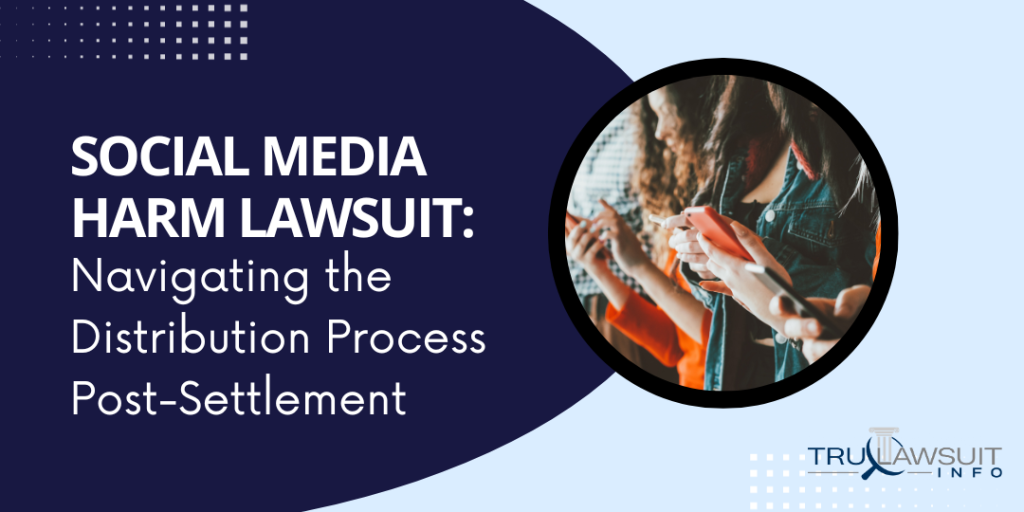
Once a settlement is reached in a social media class-action lawsuit, distributing the compensation among members isn’t as straightforward as dividing it equally.
The court typically appoints a claims administrator who oversees this process.
They assess each claim based on certain criteria, such as:
- The extent of harm suffered by each plaintiff
- The directness of the link between the defendant’s actions and the plaintiff’s damages
- Any other relevant factors specific to the case at hand
Some plaintiffs may receive more than others because their losses were greater or their injuries more psychological or physical harm more severe.
To illustrate, let’s consider an imaginary scenario where Instagram settles a lawsuit for causing harmful side effects among teenagers due to excessive screen time.
A teenager who developed severe eye problems might receive more compensation than another who only experienced minor headaches.
Attorney’s fees and costs are often deducted from the settlement fund before distribution.
Noteworthy Class Action Social Media Harm Lawsuit Success Stories
Facebook Mental Health Lawsuit
Arguably one of the most significant cases in recent years is the Facebook mental health lawsuit.
The social media giant faced a class-action suit over its alleged role in causing mental health issues among users, particularly teenagers.
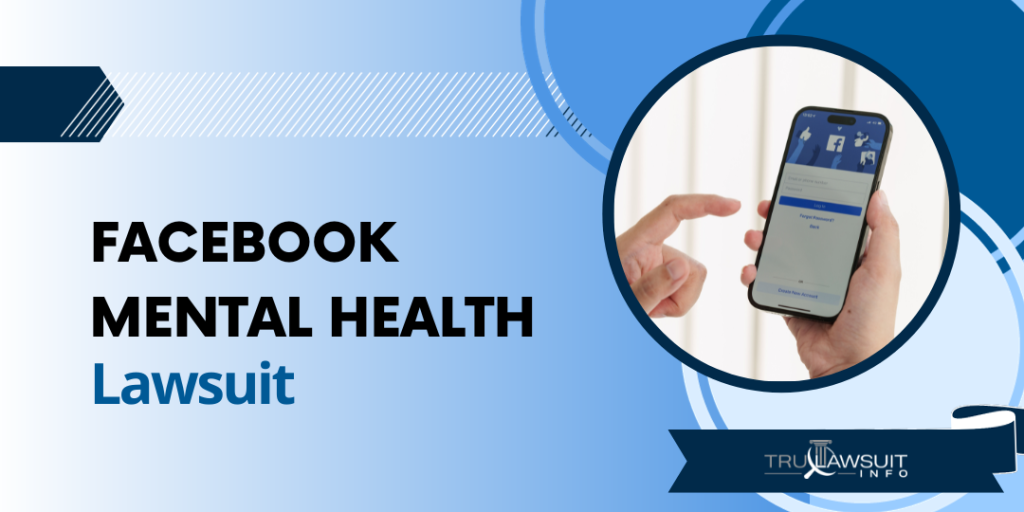
The plaintiffs claimed that Facebook knowingly perpetuated addictive behavior and failed to disclose the potential harm to its users’ mental health problems.
The case resulted in a landmark decision setting a precedent for future litigation against social media platforms.
The Role of Class Representatives in Social Media Harm Class Actions
Class representatives play a pivotal role in class action lawsuits, especially those related to social media harm.
Their responsibilities and duties significantly influence the success of these lawsuits.
Duties of Class Representatives
Class representatives are essentially the face of a social media class action lawsuit.
They represent the interests of all members within the group who have suffered similar harm.
Here are some of the duties of the class representatives:
- They must actively participate in litigation, working closely with attorneys.
- Regular communication with legal counsel is crucial to ensure that they’re up-to-date on case developments.
- They may need to appear in court, testify, or provide documents relating to their claims.
- It’s their responsibility to review and approve any proposed settlement agreement.
For instance, let’s consider a hypothetical case where several users sue a major social media platform for privacy breaches.
The class representative would be responsible for communicating with attorneys about how these breaches affected them personally and how they likely affected others in the same situation.
Importance of Class Representatives
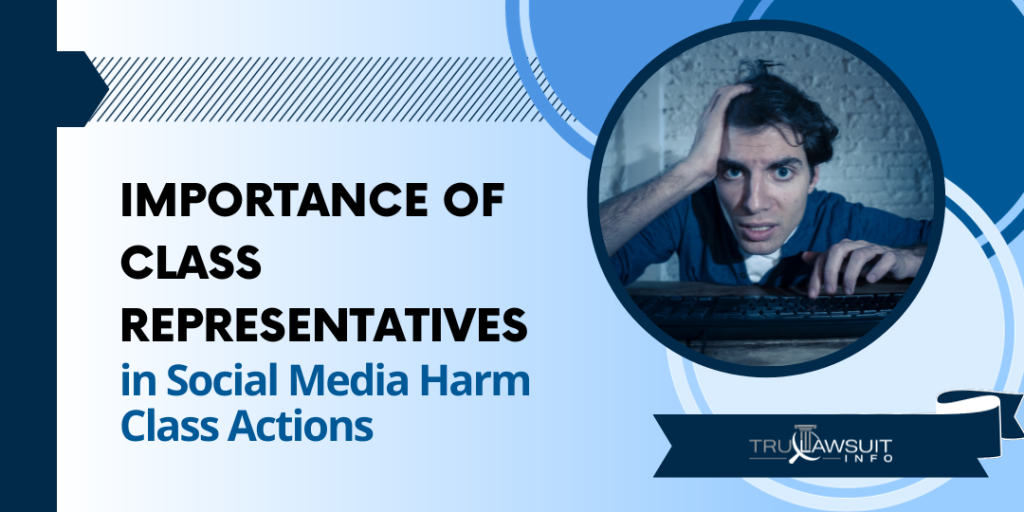
The role of class representatives is critical for several reasons:
- 1. They serve as the primary plaintiffs: In most cases, judges look at their experience when deciding whether a case should proceed as a class action lawsuit against social media.
- 2. Ensuring fair representation: Since it’s impractical for every member of a large group to participate actively in litigation, class representatives ensure that everyone’s interests are adequately represented.
Consider this – if you were part of a group suing because your data was unlawfully sold by a social media giant, wouldn’t you want someone trustworthy representing your side?
Someone who understands your grievances and will fight tooth and nail for justice?
Case Study: Facebook Biometric Privacy Lawsuit
To understand this better, let’s take an example from real life – Facebook’s biometric privacy lawsuit.
In this case, the class representatives played a key role in securing a whopping $650 million settlement.
Their active involvement and commitment to protecting the rights of Illinois Facebook users were instrumental in winning this landmark case.
Class Action Lawsuit Eligibility Criteria for Social Media Harm Victims
Key Criteria to Qualify
To qualify as a plaintiff in a social media harm class action lawsuit, several key criteria must be met.
These include:
- Proving that you have suffered actual harm or injury as a result of the defendant’s actions.
- Demonstrating that your harm is similar to the injuries suffered by other members of the proposed class.
- Showing that there are enough people who have been similarly harmed to justify a class action.
For instance, if you’ve been subjected to online harassment on a social media platform and suffered emotional distress as a result, you might meet these criteria.
However, if your experience is unique or the number of potential plaintiffs is small, a class action may not be feasible.
Understanding the Process and Requirements
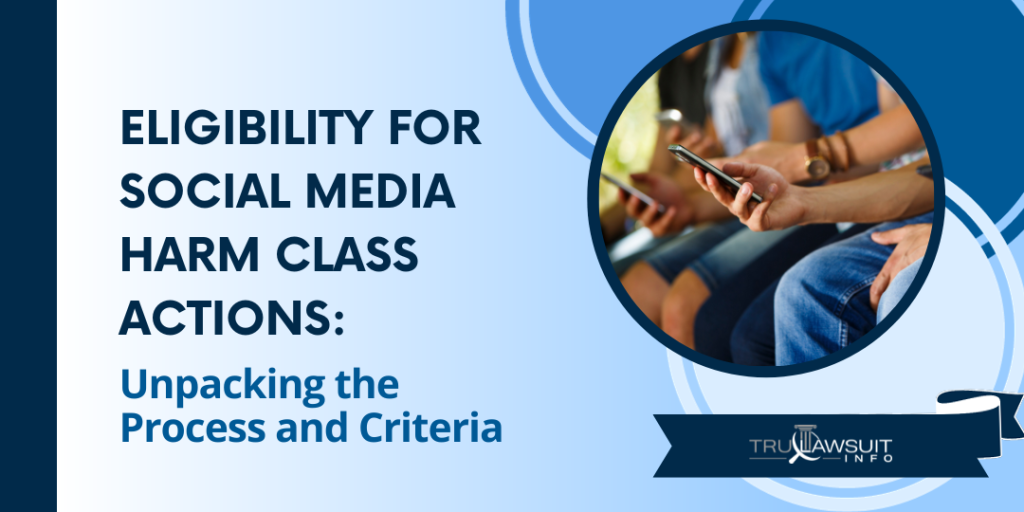
Joining a social media harm class action lawsuit isn’t as simple as signing up.
It involves understanding complex legal processes and meeting specific requirements.
Here’s what it typically looks like:
- Identify an existing lawsuit: If there’s already a class action suit against the offending social media platform, you can join without having to file your own lawsuit.
- Opt-in: Most class actions require potential members to opt-in by responding to a notice they receive about the case.
- Provide evidence: You’ll need to provide proof of your claim – this could include screenshots of harmful content or records of interactions with the platform’s support team.
Remember that joining such lawsuits doesn’t guarantee compensation – even if the case is won, any awarded damages are usually divided among many plaintiffs.
Case Study: Facebook Privacy Breach
A real-world example can shed light on these points.
In 2018, Facebook faced multiple lawsuits following data breaches affecting millions of users worldwide.
The suits alleged that Facebook failed to protect user data from being harvested without consent by third-party apps.
In this scenario, affected users who wished to join the class action had to prove they were among those whose data was misused.
They also needed to demonstrate that this misuse resulted in actual harm, such as identity theft or financial loss.
This case underscores the complexity and specificity required when joining a social media harm class action.
It’s not just about being upset with a platform’s practices – you need concrete proof of harm and a clear link between that harm and the defendant’s actions.
The Role of Legal Counsel
Given these complexities, legal counsel plays a crucial role in social media harm class actions.
A social media attorney or lawyer can help potential plaintiffs understand their eligibility, navigate the process, and gather necessary evidence.
They can also provide valuable advice on whether it’s worth joining an existing suit or starting a new one.
In cases like these, collective action is often the most effective way for individuals to seek justice against powerful tech giants.
However, it’s essential to remember that every case is unique – what worked for one group of plaintiffs may not apply to another.
Class Action Litigation Strategies for Social Media Harm Lawsuits
Effective Strategies Used by Lawyers
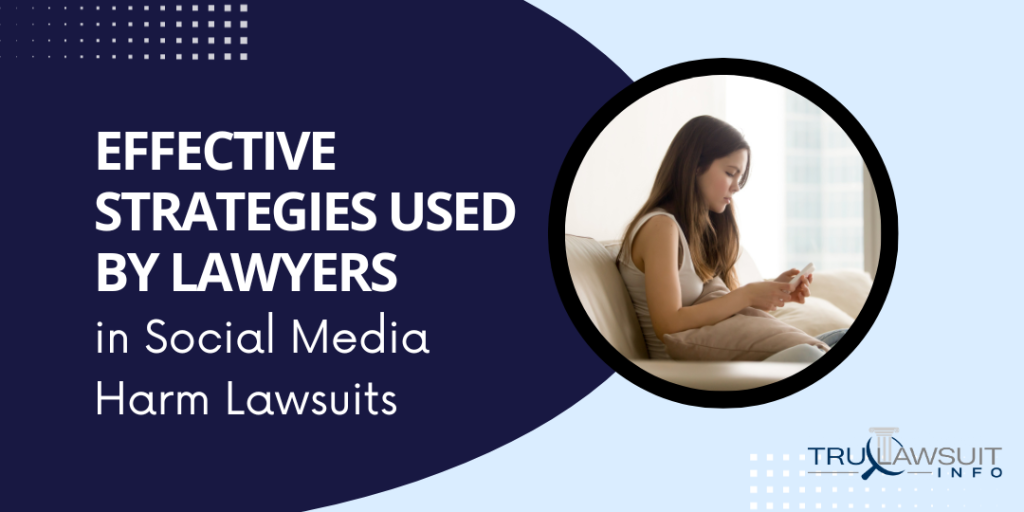
In the realm of social media harm lawsuits, lawyers often employ a variety of effective strategies.
These tactics are designed to address the collective nature of these cases and maximize the potential for success.
Lawyers usually kick off with a thorough investigation into the claim.
They gather evidence from various sources, including social media platforms themselves.
This could involve screenshots of harmful content or records of online interactions that demonstrate physical harm done.
Another common strategy is leveraging public sentiment towards social media companies.
By highlighting their irresponsible behavior in handling user data or failing to moderate harmful content, lawyers can build a strong case against them.
They often use marketing techniques to reach out to potential class members.
This includes targeted advertising, social media lawsuits, and engaging with victims through forums and other online communities.
The Future of Collective Action: Trends in Social Media Harm Class Actions
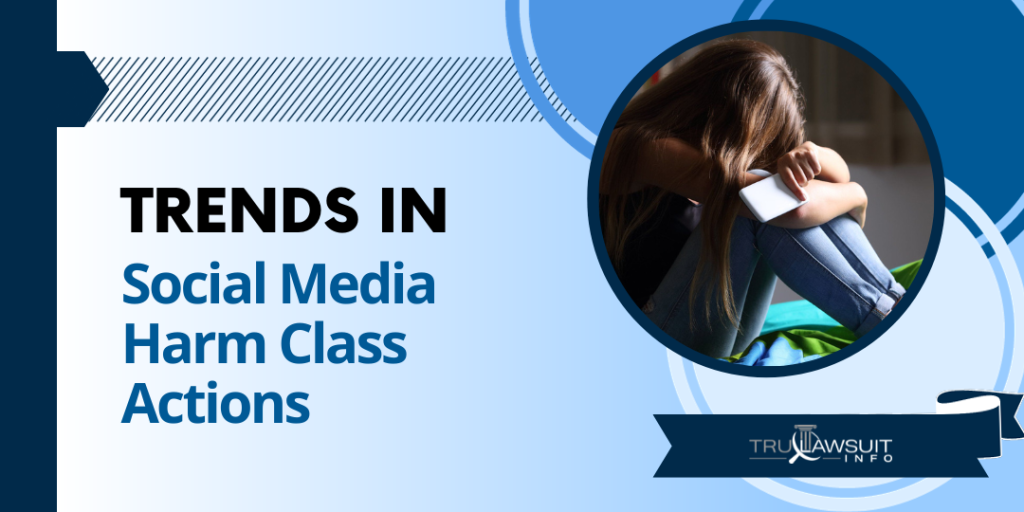
The landscape of collective action, particularly in the realm of social media harm lawsuit, is continually evolving.
As more individuals become aware of their rights and potential remedies when they suffer harm through social media platforms, the number and scope of these class action lawsuits are likely to increase.
It’s crucial for potential plaintiffs to understand the intricacies involved in these cases, including the benefits and drawbacks of joining a class action lawsuit versus filing individually, the process for class certification, and what to expect from settlements.
Taking part in a class action lawsuit can be an effective way to seek justice against powerful social media companies.
However, it’s not a decision that should be taken lightly.
Potential plaintiffs should thoroughly review eligibility criteria and consider various litigation strategies before deciding on their course of action.
To stay updated on recent developments in this area or if you believe you may have grounds for a social media harm lawsuit, consult with legal professionals experienced in class actions.
Frequently Asked Questions
-
What Is A Social Media Harm Class Action Lawsuit?
A social media harm class action lawsuit involves a group of people who have suffered similar damages due to harmful practices or policies by a social media company suing collectively rather than individually.
-
What Are Some Advantages Of Joining A Class Action Lawsuit?
Joining a class-action suit can provide strength in numbers against large corporations, reduce individual legal costs, and ensure consistency in legal rulings.
-
How Does One Become Eligible For Such Lawsuits?
Eligibility varies depending on specific case details but typically requires proving that you’ve suffered damages as a direct result of the defendant’s actions or policies.
-
What Is Meant By 'Class Certification'?
Class certification refers to court approval allowing plaintiffs with similar claims to proceed as a group (or ‘class’) rather than individually.
-
What Role Do 'Class Representatives' Play In These Lawsuits?
Class representatives are typically individuals who have suffered the most significant harm and represent the interests of all class members throughout the lawsuit.

Experienced Attorney & Legal SaaS CEO
With over 25 years of legal experience, Jessie is an Illinois lawyer, a CPA, and a mother of three. She spent the first decade of her career working as an international tax attorney at Deloitte.
In 2009, Jessie co-founded her own law firm with her husband – which has scaled to over 30 employees since its conception.
In 2016, Jessie founded TruLaw, which allows her to collaborate with attorneys and legal experts across the United States on a daily basis. This hypervaluable network of experts is what enables her to share reliable legal information with her readers!
Have A Case?
Here, at Tru Lawsuit Info, we’re committed to helping victims get the justice they deserve.
To do this, we actively work to connect them with attorneys who are experts in litigating cases similar to theirs.
Would you like our help?
Tru Lawsuit Info is a reliable source of information about issues that may affect your health and safety, such as faulty products, data breaches, and environmental hazards.
Our team of experienced writers collaborates with medical professionals, lawyers, and advocates to produce informative articles, guides, and other resources that raise awareness of these topics.
Our thorough research provides consumers with access to reliable information and updates on lawsuits happening around the country. We also can connect consumers with attorneys if they need assistance.
Camp Lejeune's water contamination issue spanned several decades starting in the 1950s. Exposure to these chemicals has been linked to various serious health issues, including cancer, organ diseases, and death.
Research is increasingly suggesting a link between the use of Tylenol during pregnancy and the development of neurodevelopmental disorders, such as autism and ADHD, in infants.
Legal action is being taken against manufacturers of Aqueous Film-Forming Foam (AFFF), a chemical used in fighting fires. The plaintiffs allege that exposure to the foam caused health issues such as cancer, organ damage, and birth and fertility issues.
Have A Case?
Here, at Tru Lawsuit Info, we’re committed to helping victims get the justice they deserve.
To do this, we actively work to connect them with attorneys who are experts in litigating cases similar to theirs.
Would you like our help?







